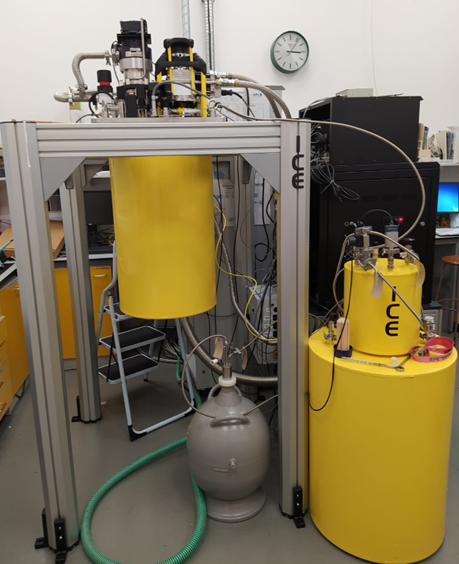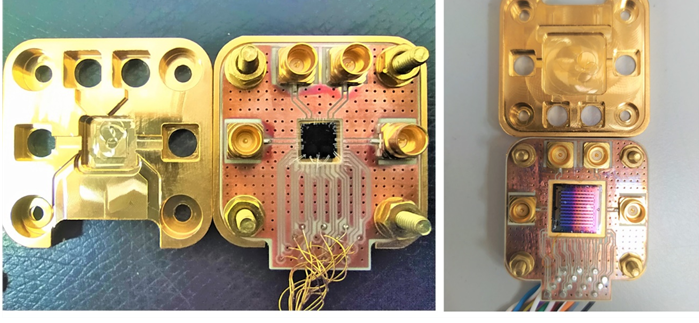 The emerging field of quantum information processing relies on the detection of weak microwave signals. This is commonly achieved using semiconductor amplifiers which are crucial in the development of these new technologies. However, for continued advancement a faster, more robust signal detection is required.
The emerging field of quantum information processing relies on the detection of weak microwave signals. This is commonly achieved using semiconductor amplifiers which are crucial in the development of these new technologies. However, for continued advancement a faster, more robust signal detection is required.
Superconducting parametric amplifiers (SPAs) allow quantum-limited amplification of weak microwave signals. Quantum-limited amplification means that the noise added by the amplifier is the minimum which quantum mechanics allows, half a photon per unit bandwidth. Low added noise coupled with high gain is essential for the further development of quantum information processing.
Superconducting parametric amplifiers are already playing a transformative role in moving superconducting quantum information and computing forward, however, their design and characteristics still require improvement.
NPL is developing test capabilities for the key characteristics. Please contact us to discuss your requirements.
The gain of the amplifier should be large enough (in practice, 20 dB or more) to beat the noise added by the subsequent stages in the amplifier chain
The amplifier should have a constant gain over a bandwidth that is large enough for the desired application, ranging from several MHz to several GHz
The amplifier should function as a linear device with output signal power proportional to the input signal power for a wide range of input signal power (this range of power, known as the dynamic range of the amplifier, should be large enough so that more than just a few incident photons can be reliably detected
 Unidirectional
UnidirectionalThe amplifier should, ideally, amplify only signals incident from the system being probed and de-amplify signals coming from subsequent devices in the amplification chain (this is necessary to prevent spurious noise in other parts of the setup to propagate back into the system under measurement)
The necessary energy for the amplification process should be delivered to the amplifier in a manner that is as simple and robust as possible, without very precise tunin
The circuit implementing the amplifier should have a minimal number of parts, and the parts should not require too delicate tolerances
Ideally, a detector should have no influence on the quantity it is measuring. It is sometimes the case that back action by the detector is an inherent feature of the system, and not just a result of the detector being imperfect.
The noise added by the amplifier should be near the minimum imposed by quantum mechanics.